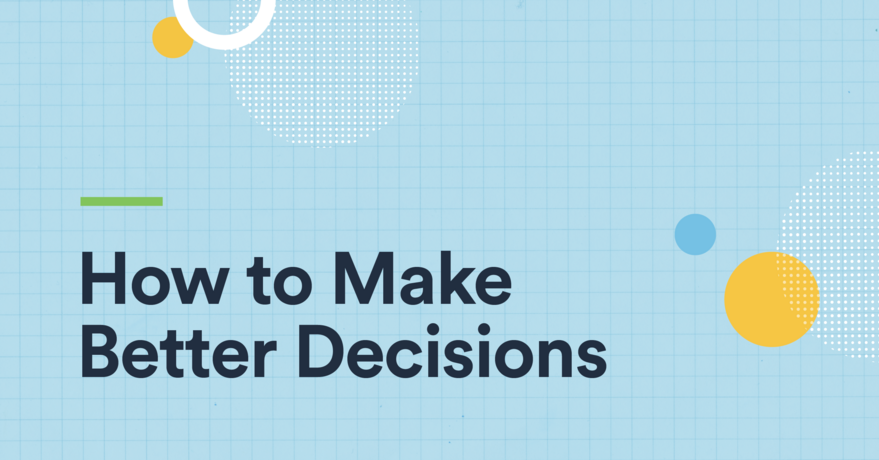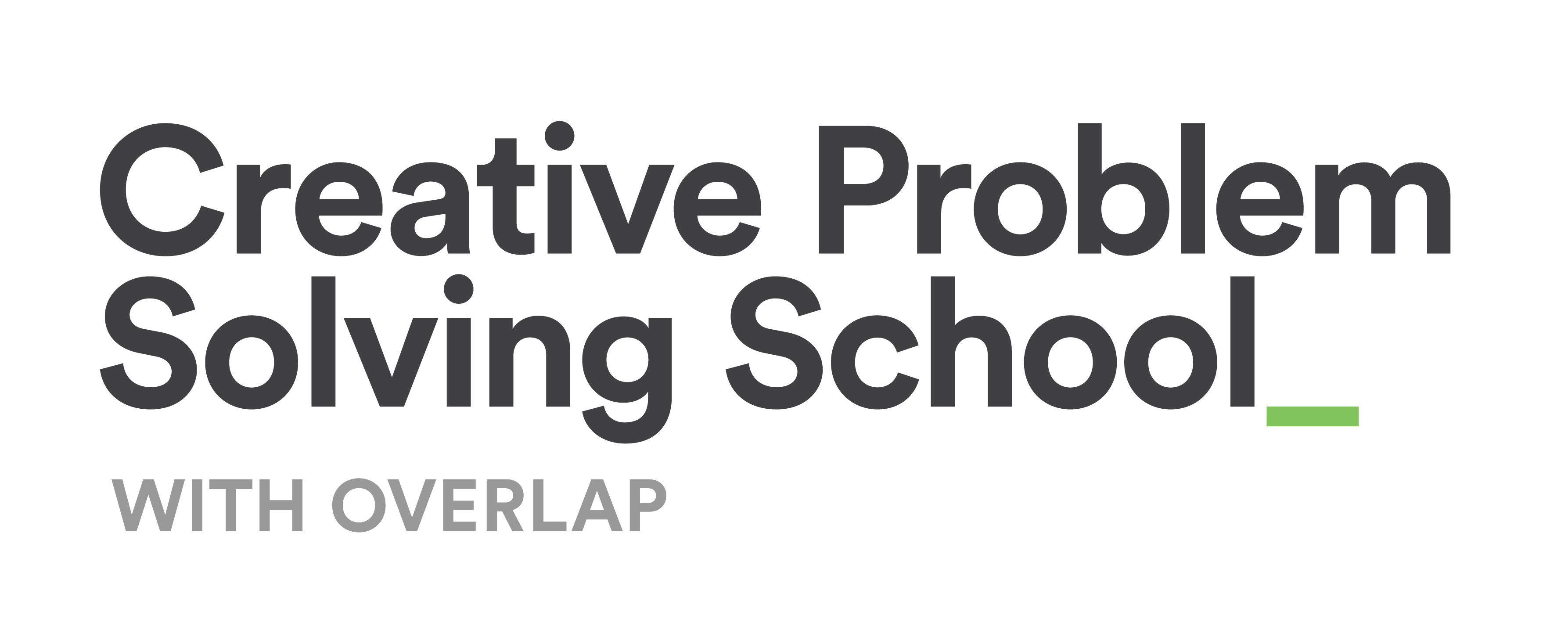How to Make Better Decisions

It’s hard to know how to make good decisions. How do you know beyond a doubt that the choice you’re about to make is the right one? What if you get it wrong? This fear can be paralyzing, as none of us know what the future holds. Truthfully, every decision we make is a risk, but we can mitigate that risk by learning how to make better decisions.
In this post, we’ll discuss how you can make better decisions, including key design thinking strategies and an overview of the most effective decision making tools.
How to Make Better Decisions
Allow Yourself to Get Things Wrong
Let’s start with discussing failure since it’s one of the major hurdles people need to get over in order to improve their decision making process. Failure is okay—it’s actually encouraged within design thinking. Without a bit of failure, you wouldn’t be able to learn, grow, and become better.
In order to make better decisions, you need to be comfortable getting things wrong from time to time. Far too often, we are paralyzed by indecision because we are worried we will get things wrong. We err on the side of caution rather than jumping in and trying something that could result in failure.
Allow yourself to get things wrong and give your team the freedom to make mistakes so that they can learn from them. You know the old saying, “You miss 100% of the shots you don’t take.” Embrace failure as a learning opportunity—without it, innovation is stifled.
Just Make a Decision
By pondering a decision over and over without actually making one, you keep yourself from acquiring new information. It’s better to make a decision than it is to delay or not make one at all.
Another way to describe this is analysis paralysis, where overanalyzing and overthinking the possible outcomes of a decision keep any decision from being made. The problem is, it’s very difficult to predict the future. The only way forward is to make a decision and then analyze its outcomes. After you make a decision, you can take what you learned and apply it to another iteration or future decision.
The specific choice you make is often less important than making a decision in the first place. Once a decision is made, you can move forward into the testing phase.
Test Your Ideas Early and Often
Take time to brainstorm and consider possibilities, and if working in a group, deliberate on the best decision, but don’t get stuck here for too long. You need to make a decision so that you can test your ideas. The sooner you test your ideas, the better.
Say you’re designing a simple tool, such as a pen. You design, build, implement, and begin manufacturing the product. You’ve deeply considered its construction, the packaging is beautiful, and now it’s in the hands of your customers. Unfortunately, it turns out your beautiful design doesn’t work for those who are left-handed, and the silky grip you thought was superb is disliked by most of your customers. To top it all off, once the complaints start rolling in, you realize your clientele actually prefers to use pencil.
It’s clear you need to pivot, but this late in the game, you have a warehouse of products, many unhappy customers, and a budget that’s already spent. This all could have been avoided if you had tested your ideas and sought feedback from your customers throughout product development.
While it’s unlikely a product like this would get that far along without being tested first, there are far too many people, businesses, and industries that don’t fully utilize the power of testing early and often.
Gather Constructive Feedback
Gathering constructive feedback is critical to effective decision making. You need to make sure you are testing with real people—the users, customers, stakeholders, and community members who will be affected by your decisions.
Authentic feedback needs to come straight from the source. Bring in customers and stakeholders early, and ask for honest feedback. Even if the feedback is tough to hear, it’s best to hear it sooner rather than later.
There are many tools and strategies for gathering constructive feedback, and several of them are outlined in our list of 75 Design Thinking Tools and Resources. A Feedback Grid is one of our favourites since it collects insights that are both meaningful and constructive. The grid encourages people to share what they like, what they would improve, what questions they have, as well as any new ideas.
We also recommend utilizing the Testing Brief Worksheet Pad, which was designed to support a consistent method for determining what you need to test, with whom, and what you're hoping to learn.
Remember What Matters Most
To make an informed decision, you need to consider what matters most. Depending on the type of decision, this could be customer needs, stakeholder desires, company goals, or your own personal values.
For example, if you are making a decision about a product, your customer needs should be top of mind. You can’t make a good decision for your customers if you aren’t keeping their needs front and centre in your decision making process.
If you are making a decision about where to take your business next, you will likely fall back on your company goals and values. What does your business value? What is your mission? What do you stand for? These are all considerations that should guide your decision making.
Question Your Assumptions
What would happen if you made the opposite decision? What would the outcome be? What positives or negatives could come from making a completely unexpected decision? What might the consequences be, and is it worthwhile going an entirely different direction?
Even if you don’t follow through on a decision that’s completely opposite to your initial thinking, the act of thinking through these unexpected possibilities can yield fresh ideas. You may find what you thought was impossible actually has merit or aspects that are worth exploring.
The act of questioning your assumptions gets you thinking about the impossible. Taking the time to consider even the most far-fetched possibilities will make you feel more secure in your decision making.
Decision Making Tools
Many decisioning tools are designed to help teams come to an agreement, but these tools can be utilized by individuals as well.
Affinity Mapping
Affinity mapping helps teams group similar ideas, narrow down solutions, and make decisions as a team. Affinity mapping often occurs after a group brainstorming session when all of the ideas generated by the group are in a space visible to everyone.
Begin clustering the data into related groups of similar ideas or solutions. If you’re not sure where to put an idea, add it to a “parking lot” to the side until you get further along. Continue combining and branching clusters as needed until you are happy with the organization of the clusters. Do an extra assessment to make sure each cluster is necessary and stands on its own as a separate idea.
Next, work together to give each cluster a name that generally describes the ideas it encompasses. Finally, it’s time to vote, which can be done outright or with other voting methods, like the $100 Test or an Impact Effort Matrix (outlined below.)
For remote teams, you can utilize online tools, such as Lucidspark, Cardsmith, or Mural, to create an interactive digital space for completing this exercise.
$100 Test
The $100 test asks everyone to put their money on the best, most viable ideas. Everyone is given a theoretical $100 that they can spend on the idea or ideas they like most. Depending on your preference, you can put the majority of your money into one possible decision or spread your money across a few ideas. It’s a quick exercise that encourages team members to commit to the ideas that make the most sense in order to reach an agreement.
Impact Effort Matrix
An impact effort matrix helps reveal the best decision based on a combination of the effort required for impact gained. The matrix is a four-quadrant “t” shape with an x and y-axis. One axis represents impact (low to high,) and the other axis represents effort (low to high.)
Place your ideas or possible decisions where they align based on the effort needed and the resulting impact. The ideal options are the ones with high impact for low effort. If you are trying to make a decision, go with these options first.
💡 Learn more about the impact/effort matrix and how to utilize it. You’ll also find this tool, along with many others, in our Design Thinking Process Cards deck.
Decision Making Training
Overlap’s Creative Problem Solving School was carefully crafted to bring design thinking training to anyone ready to learn. Our suite of courses shares tools and strategies that will help you and your team make better decisions.
If you want to continue developing your decision making skills, take part in our Making Better Decisions (203) course. This course highlights the importance of feedback as well as simple yet powerful decision making tools for choosing directions, setting priorities, and reaching consensus in a group. It’s a deep dive into the Test and Decide phases of the human-centred design cycle.

0 comments
Leave a comment
Please log in or register to post a comment